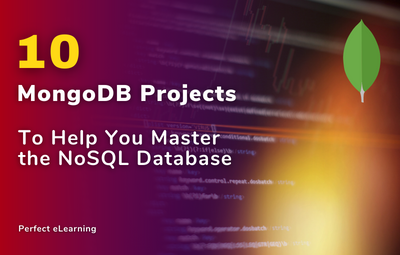

Embark on a journey through the heart of data structures. Feel the thrill of mastering stacks, unveiling their secrets, and applying them with passion.
In the vast realm of computer science, mastering data structures is akin to unraveling the secrets of a complex puzzle. One such crucial element in this puzzle is the humble yet powerful stack. In this article, we will delve into the essential operations and applications of stacks, exploring how mastering them can elevate your understanding of data structures.
1. Definition of Stacks
At its core, a stack is a data structure that follows the Last In, First Out (LIFO) principle. Imagine a stack of plates at a buffet – the last plate placed is the first one you pick up. In computing, this simple concept forms the foundation of various applications.
2. Importance of Mastering Stacks
Why should one invest time in mastering stacks? Stacks play a pivotal role in numerous algorithms and applications, making them indispensable for programmers. Whether it's managing function calls, implementing undo mechanisms, or navigating through web browser history, stacks are the unsung heroes.
3. Basics of Stacks
3.1 Understanding the LIFO Principle
The LIFO principle governs stack operations, where the last element added is the first to be removed. This simplicity masks a profound utility, especially in scenarios requiring efficient management of data.
3.2 Anatomy of a Stack
A stack typically comprises two primary operations – push, which adds an element to the stack, and pop, which removes the last-added element. This straightforward structure conceals the versatility that programmers can harness.
4. Essential Operations
4.1 Push and Pop Functions
The push and pop functions are the building blocks of stack operations. Push adds an element to the top of the stack, while pop removes the topmost element. This dynamic duo forms the backbone of stack manipulation.
4.2 Peek Operation
The peek operation allows us to view the top element without removing it. This can be crucial in scenarios where you need to inspect the next operation without altering the stack's state.
5. Applications in Data Structures
5.1 Function Call Management
Stacks play a pivotal role in managing function calls in programs. As functions are called, the stack keeps track of their execution, ensuring a smooth flow of control.
5.2 Undo Mechanism in Software
Ever wondered how 'Undo' works in your favorite software? Stacks are the wizards behind the curtain, storing previous states and enabling a seamless reversal of actions.
6. Advanced Stack Operations
6.1 Implementing Dynamic Memory Allocation
Stacks can be utilized for dynamic memory allocation, ensuring efficient use of memory resources. This becomes particularly handy when dealing with variable-sized data structures.
6.2 Recursive Algorithms
Recursive algorithms often rely on stacks for managing the call stack. Understanding this interplay is crucial for developing efficient recursive solutions.
7. Real-world Examples
7.1 Navigating the Web Browser History
When you click the back button in your web browser, it's the stack that takes you to the previous page. Understanding this process sheds light on the intricate workings of web navigation.
7.2 Managing Task Execution in Operating Systems
Operating systems employ stacks to manage the execution of tasks. Each task gets its stack, allowing for isolated execution and efficient resource management.
8. Challenges in Stack Mastery
8.1 Handling Stack Overflow
While stacks are powerful, they are not invincible. Stack overflow can occur when the stack exceeds its allocated space, leading to potential crashes. Careful programming and efficient memory management are vital to mitigate this risk.
8.2 Efficient Memory Management
Efficient memory management is a constant challenge. Stacks demand a delicate balance, and understanding memory allocation is key to optimizing performance.
9. Tips for Efficient Stack Usage
9.1 Optimizing Code Performance
Writing efficient code involves optimizing stack usage. This includes minimizing unnecessary push and pop operations and utilizing the stack intelligently.
9.2 Debugging Techniques
When debugging, understanding how the stack evolves can be immensely helpful. Utilize debugging tools to trace the stack and identify potential issues.
10. The Future of Stacks
10.1 Evolving Technologies
As technology evolves, so do the applications of stacks. From artificial intelligence to blockchain, mastering stacks positions you at the forefront of innovation.
10.2 Continuous Learning in the Field
The world of computer science is ever-changing. Continuous learning and staying updated with new developments ensure you remain a master of your craft.
Conclusion
Mastering stacks is not just a skill; it's a journey into the heart of efficient programming. From basic operations to real-world applications, stacks are the unsung heroes that make complex tasks appear seamless. Embrace the challenge, understand the nuances, and elevate your programming prowess by mastering stacks.
Q1. Can I use stacks in languages other than C++ or Java?
A1: Absolutely! Stacks are a fundamental concept applicable across various programming languages.
Q2. How do stacks contribute to the efficiency of recursive algorithms?
A2: Stacks manage the call stack in recursive algorithms, ensuring proper execution and memory utilization.
Q3. Is stack overflow a common issue in programming?
A3: While not extremely common, it can occur. Careful programming and understanding memory limits help prevent stack overflow.
Q4. Are there any real-world applications where stacks are not suitable?
A4: Stacks might not be the optimal choice for scenarios requiring constant random access to elements.
Q5. What's the best way to optimize stack usage in my code?
A5: Optimize by minimizing unnecessary operations, using stack intelligently, and embracing efficient coding practices.


